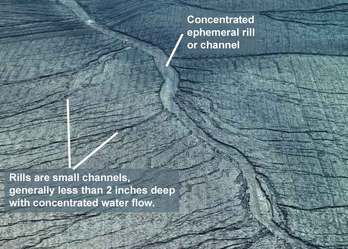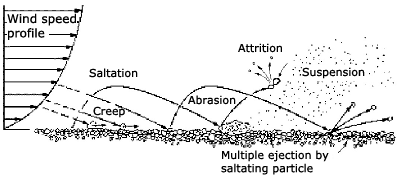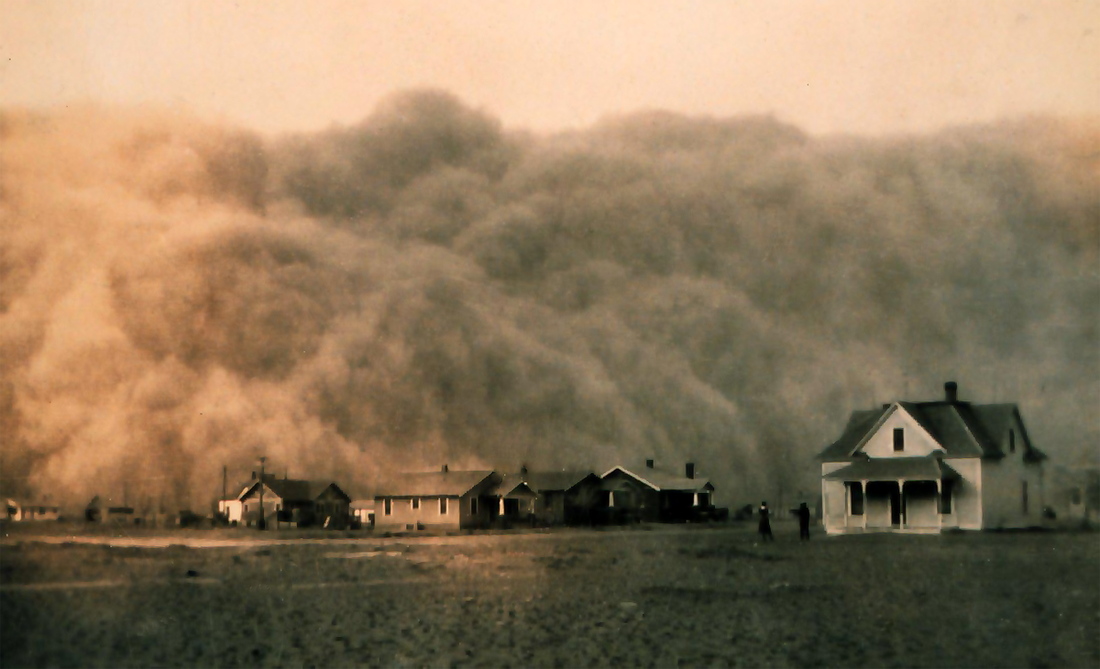|
Soil erosion is the enemy of anyone who works with soil. It is a constant battle against the elements in a effort to save and improve the precious resource that is soil. The primary erosive forces that occur in nature are wind and water and they effect soil in different and subtle ways.
 Water Water erosion is a common problem facing farmers, ranchers, roads and anything that is built on soil. There are four types of erosion that occur from water, sheet, rill, gully and splash erosion. Sheet erosion is when water move across the soil surface in a smooth even layer of water. It is not a very powerful form of erosion and will only remove a thin layer of soil. The caveat to that is the water will remove soil from a large area and that can add up quickly when you have large areas of bare soil cropland. Rill erosion is the next step up on the water erosion list. You get rill erosion when the even coverage of sheet erosion coalesces into thin streams of water that cut deeper into the soil profile. They can create a spider web effect across a bare crop field that looks like the picture to the right. Gully erosion is created when rills run together and slope increases which causes the water to dig down into the soil and create a wide, deep channel. There is some confusion sometimes about when it is a rill and when it is a gully. A good rule of thumb to follow is that when you can smooth it out easily then it's a rill if you can't then it's a gully. Splash erosion occurs during weather events when rain drops impact the soil and can fling soil particles up to 3 feet from the impact point. In the center of a field this is not much of issue but it can cause erosion at the edges. So now that I have covered the basic ways erosion happens in nature it should give you a better idea how it can happen to you. You have to understand how erosion works so that it can be avoided when you are trying to build a sustainable life. Erosion if not properly planned for can ruin months of work in one bad storm so it is important to know your land and the soils that are on it. Soil erosion is the enemy of anyone who works with soil. It is a constant battle against the elements in a effort to save and improve the precious resource that is soil. The primary erosive forces that occur in nature are wind and water and they effect soil in different and subtle ways.
2 Comments
|
AuthorHello my name is Josh Larson and I am the creator of the Green Living Library. Here on the blog you will find updates to content found in the Green Living Library as well as stories from those living the sustainable life already. Archives
December 2021
Categories
All
|

